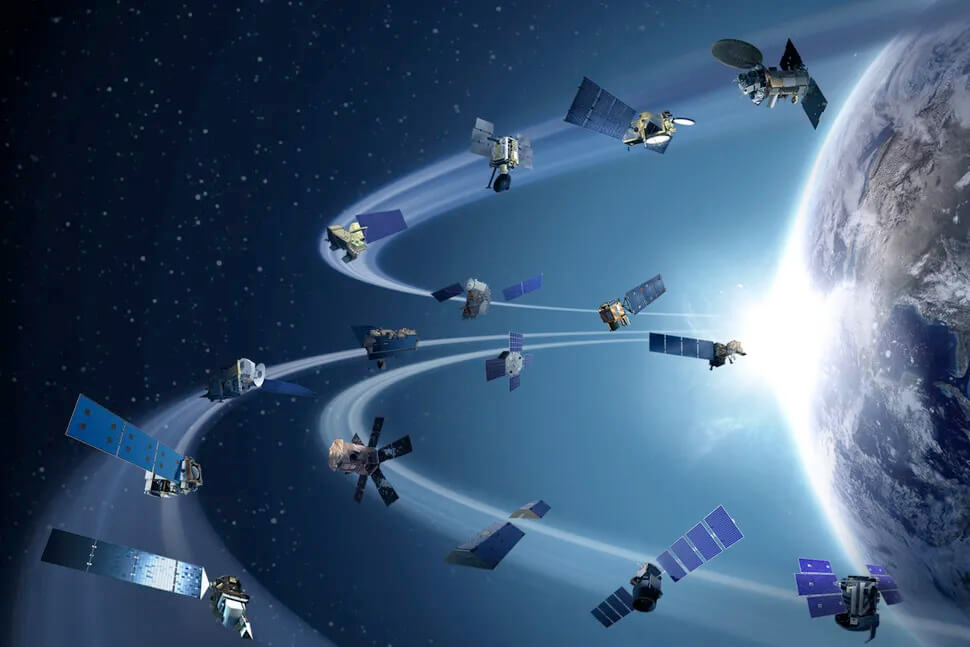University of Colorado Boulder astrophysicist Jeremy Darling is pursuing a new way of measuring the universe's gravitational wave background—the constant flow of waves that churn through the cosmos, warping the very fabric of space and time.
The research, published in The Astrophysical Journal Letters , could one day help to unlock some of the universe's deepest mysteries, including how gravity works at its most fundamental level.
"There is a lot we can learn from getting these precise measurements of gravitational waves," said Darling, professor in the Department of Astrophysical and Planetary Sciences. "Different flavors of gravity could lead to lots of different kinds of gravitational waves."
To understand how such waves work, it helps to picture Earth as a small buoy bobbing in a stormy ocean.
Darling explained that, throughout the history of the universe, countless supermassive black holes have engaged in a volatile dance: These behemoths spiral around each other faster and faster until they crash together. Scientists suspect that the resulting collisions are so powerful they, literally, generate ripples that spread out into the universe.
This background noise washes over our planet all the time, although you'd never know it. The kinds of gravitational waves that Darling seeks to measure tend to be very slow, passing our planet over the course of years to decades.
In 2023, a team of scientists belonging to the NANOGrav collaboration achieved a coup by measuring that cosmic wave pool. The group r ecorded how the universe's gravitational wave background stretched and squeezed spacetime, affecting the light coming to Earth from celestial objects known as pulsars, which act somewhat like cosmic clocks.
But those detailed measurements only captured how gravitational waves move in a single direction—akin to waves flowing directly toward and away from a shoreline. Darling, in contrast, wants to see how gravitational waves also move from side-to-side and up and down compared to Earth.
In his latest study, the astrophysicist got help from another class of celestial objects: quasars, or unusually bright, supermassive black holes sitting at the centers of galaxies. Darling searches for signals from gravitational waves by precisely measuring how quasars move compared to each other in the sky. He hasn't spotted those signals yet, but that could change as more data become available.
"Gravitational waves operate in three dimensions," Darling said. "They stretch and squeeze spacetime along our line of sight, but they also cause objects to appear to move back and forth in the sky."
Galaxies in motion
The research drills down on the notoriously tricky task of studying how celestial objects move, a field known as astrometry.
Darling explained that quasars rest millions of light-years or more from Earth. As the glow from these objects speeds toward Earth, it doesn't necessarily proceed in a straight line. Instead, passing gravitational waves will deflect that light, almost like a baseball pitcher throwing a curve ball.
Those quasars aren't actually moving in space, but from Earth, they might look like they are—a sort of cosmic wiggling happening all around us.
"If you lived for millions of years, and you could actually observe these incredibly tiny motions, you'd see these quasars wiggling back and forth," Darling said.
Or that's the theory. In practice, scientists have struggled to observe those wiggles. In part, that's because these motions are hard to observe, requiring a precision 10 times greater than it would take to watch a human fingernail growing on the moon from Earth. But our planet is also moving through space. Our planet orbits the sun at a speed of roughly 67,000 miles per hour, and the sun itself is hurtling through space at a blistering 850,000 miles per hour.
Detecting the signal from gravitational waves, in other words, requires disentangling Earth's own motion from the apparent motion of quasars. To begin that process, Darling drew on data from the European Space Agency's Gaia satellite . Since Gaia's launch in 2013, its science team has released observations of more than a million quasars over about three years.
Darling took those observations, split the quasars into pairs, then carefully measured how those pairs moved relative to each other.
His findings aren't detailed enough yet to prove that gravitational waves are making quasars wiggle. But, Darling said, it's an important search—unraveling the physics of gravitational waves, for example, could help scientists understand how galaxies evolve in our universe and help them test fundamental assumptions about gravity.
The astrophysicist could get some help in that pursuit soon. In 2026, the Gaia team plans to release five-and-a-half more years of quasar observations, providing a new trove of data that might just reveal the secrets of the universe's gravitational wave background.
"If we can see millions of quasars, then maybe we can find these signals buried in that very large dataset," he said.






